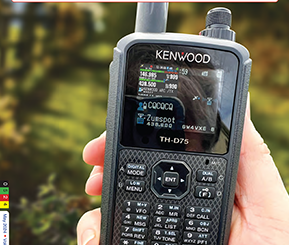Raspberry Pi & Linux a useful resource in Amateur Radio
 Many people have at least one if not more Raspberry PI Computers at home, however, are we making the best use of them when it comes to Amateur Radio?
Many people have at least one if not more Raspberry PI Computers at home, however, are we making the best use of them when it comes to Amateur Radio?
I have a number in use one runs my APRS Digipeater, the other runs a mobile I-Gate in my caravan, two are employed as pi-star hotspots, and one is a feed for Aircraft (ADS-B), another is a server for an RTL-SDR base SDR. Lastly is the one that I use mobile with my radio which can operate several data modes. (I am sure I have forgotten some).
Some Great Amateur Radio Resources you might like to look at are;
AmRRON Gitlab site has lots of useful scripts https://gitlab.com/amrron/setup-scripts
KM4ACK who has developed a complete build a pi project have a look at his YouTube site.
OH8STN who has done some great off-grid stuff his YouTube site is here.
Some background on the Raspberry Pi.
The Raspberry Pi stands as a revolutionary piece of technology, embodying the spirit of innovation and accessibility in computing. Conceived by the Raspberry Pi Foundation in the United Kingdom, this diminutive yet powerful single-board computer was first introduced to the world in 2012. The Foundation, a charitable organization aiming to promote computer science education and digital skills, envisioned a low-cost, credit card-sized computer that could serve as an affordable platform for learning programming and tinkering with hardware.
At its core, the Raspberry Pi is built around an ARM-based processor, typically running a Linux-based operating system. Despite its modest size and price, ranging from $5 to $55 depending on the model, the Raspberry Pi boasts impressive capabilities, including GPIO (General Purpose Input/Output) pins for interfacing with external devices, USB ports, HDMI output for connecting to displays, and networking capabilities through Ethernet or Wi-Fi.
The Raspberry Pi quickly gained popularity not only among educators and hobbyists but also in various industries for prototyping and developing IoT (Internet of Things) applications. Its versatility and affordability have made it an ideal tool for projects ranging from home automation and robotics to media centres and retro gaming consoles.
Over the years, the Raspberry Pi ecosystem has expanded with the introduction of multiple iterations, each offering improvements in performance, connectivity, and features. These iterations include the Raspberry Pi 2, Raspberry Pi 3, Raspberry Pi 4, and more specialized variants like the Raspberry Pi Zero and Compute Module series.
Moreover, the Raspberry Pi Foundation has actively supported the community by providing extensive documentation, tutorials, and software support, fostering a vibrant ecosystem of enthusiasts and developers worldwide. This commitment to accessibility and education has cemented Raspberry Pi’s status as a seminal platform in the realm of computing, empowering individuals of all ages and backgrounds to explore the boundless possibilities of technology.
Basic information about the Raspberry Pis use in Amateur Radio
In the realm of Amateur Radio, the Raspberry Pi serves as a versatile and cost-effective platform for a myriad of applications. Radio enthusiasts utilize the Pi for tasks such as building digital mode interfaces, setting up APRS (Automatic Packet Reporting System) gateways, running software-defined radio (SDR) receivers, and even constructing remote-controlled stations.
Its compact size, low power consumption, and GPIO pins make it ideal for interfacing with radios and sensors. Additionally, the Raspberry Pi’s capabilities extend to serving as a beacon transmitter, handling logging and data collection, and enabling experimentation with various radio-related projects, fostering innovation within the Amateur Radio community.



